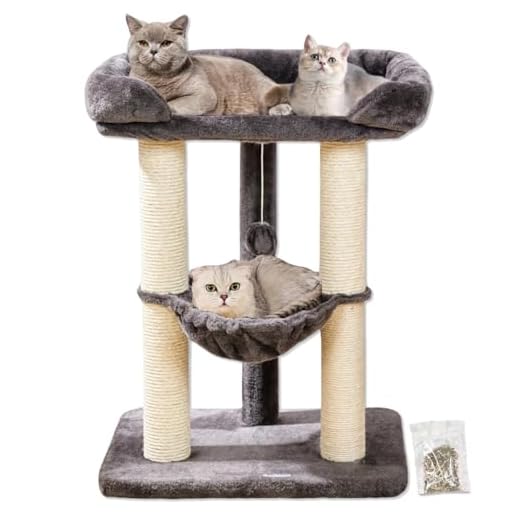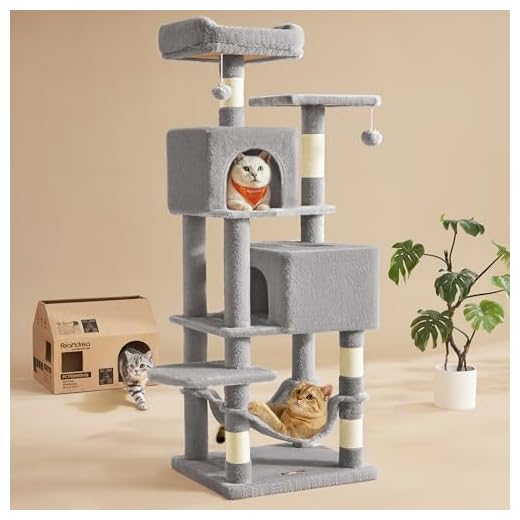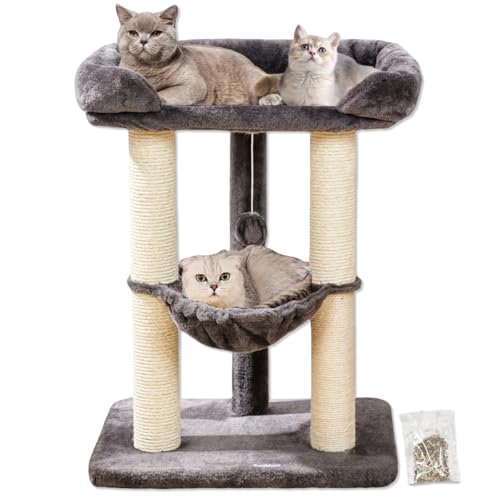



As an 8-year-old Scottish Fold, I thrive on elevated spots around my home. It’s not just about the view; being up high gives me a sense of security and control over my territory. From my favorite shelf, I can observe everything happening below, which helps me feel safe from potential threats.
Another reason for my lofty preferences lies in my natural instincts. My ancestors were skilled hunters who often sought out high vantage points to spot prey. This behavior is deeply ingrained in my DNA. So, whether I’m lounging on a windowsill or perched atop a tall cat tree, I’m simply following my instincts.
Additionally, those elevated spaces often provide warmth and comfort. Sunbeams filtering through the window create the perfect cozy spot to relax. I recommend finding a sunny perch for any feline friend; it’s blissful! Making sure to include climbing options in your home can enhance your furry companion’s happiness and well-being.
Why Do I Prefer Elevated Spaces
Finding a perch is my go-to strategy for comfort and security. From my high lookout, I can observe everything happening around me. This vantage point not only keeps me alert but also makes me feel safe from potential threats.
My feline instincts drive me to seek heights for a few reasons. First, climbing provides a sense of control over my territory. When I’m above ground level, I can survey my surroundings without fear. It’s a natural instinct inherited from my ancestors, who relied on elevated spots to evade predators.
Additionally, warmth is another perk of choosing elevated spots. Higher surfaces tend to retain heat better, making them cozy resting places. I can soak up the warmth while enjoying a peaceful nap, which is a bonus in chilly weather.
Social dynamics also play a role. When I claim a high spot, I assert my status among other pets. It’s a way to communicate my dominance or simply to enjoy some solitude away from the hustle and bustle of the household.
For those looking to create an engaging environment for their furry companions, consider installing shelves or cat trees. These structures not only cater to my climbing urges but also enhance my quality of life. A well-placed perch can transform an ordinary room into a playground filled with opportunities for exploration.
| Benefits of Elevated Spaces | Description |
|---|---|
| Safety | Provides a secure vantage point to observe surroundings. |
| Warmth | Higher surfaces retain heat better, making them cozy. |
| Social Status | Claiming elevated spots can signify dominance or independence. |
| Exploration | Encourages physical activity and mental stimulation. |
Creating a vertical playground enhances well-being and satisfies my natural instincts. It’s a win-win for both of us!
Understanding Feline Instincts for Heights
Taking to elevated spots is a natural behavior deeply rooted in my instincts. Such vantage points provide safety from predators and a clear view of my surroundings. Climbing allows for a strategic observation of potential threats and opportunities, ensuring survival in the wild.
Additionally, these high perches serve as territory markers. Elevation signifies dominance and control over an area, allowing me to claim my space. This behavior is evident in how I assert myself by finding the tallest furniture or shelves in my home.
For optimal comfort, it’s important to maintain my health. Providing the right nutrition plays an essential role. I recommend checking out canned food for cats with sensitive stomachs to ensure a balanced diet that supports my active lifestyle.
Finally, the thrill of climbing satisfies my playful nature. The excitement of navigating heights stimulates my mind and body. This behavior reflects my innate drive to explore and conquer my environment, reinforcing my sense of confidence and security.
Benefits of Elevated Spaces for Indoor Companions
Creating vertical areas offers numerous advantages for indoor companions. These elevated zones provide a safe retreat where one can observe surroundings without feeling threatened. From my vantage point atop a shelf, I can survey the entire room, ensuring my territory remains secure.
Enhanced physical activity results from access to heights. Jumping and climbing strengthens muscles and promotes agility, essential for maintaining a healthy lifestyle. Engaging in these activities daily helps prevent obesity and related health issues.
Mental stimulation is another significant benefit. Elevated spaces serve as interactive environments, encouraging exploration and play. A simple perch can transform into a lookout point, igniting curiosity and keeping the mind sharp.
Elevated areas also reduce stress. Having a personal space to retreat to during overwhelming moments fosters a sense of security. This solitude can be especially beneficial during loud household activities or visits from unfamiliar guests.
Moreover, these heights provide opportunities for social interactions. Observing family members from above creates a connection while maintaining a safe distance, allowing for a comfortable balance between socialization and independence.
In summary, incorporating vertical elements into living spaces significantly enhances overall well-being. Providing safe, stimulating environments encourages physical exercise, mental engagement, and emotional comfort. It’s a win-win for both companions and their human friends.
How to Create Safe High Perches at Home
Install sturdy shelves along the walls, ensuring they can support my weight. Use brackets that can hold at least 50 pounds, and secure them into wall studs for maximum stability.
Choose materials with a non-slip surface. Carpeting or textured wood prevents slips during my adventures at lofty heights.
Utilize Cat Trees
Consider cat trees with multiple levels. Select those crafted from solid wood or reinforced cardboard for durability. Ensure the base is wide enough to prevent tipping. Look for designs with enclosed spaces for added security and comfort.
Repurpose Furniture
Transform bookcases or cabinets into elevated spots. Securely attach them to walls to prevent accidents. Adding blankets or cushions on top makes these places cozy retreats for relaxation.
Signs Your Feline Prefers Elevated Spaces
Pay attention to specific behaviors that reveal a preference for heights. One clear indicator is the tendency to seek out the highest spot in a room. If I frequently choose the top of the bookshelf or the highest perch, it’s a sure sign I enjoy being elevated.
Another telltale sign is the way I survey my surroundings from above. If I often sit perched, watching everything unfold below, it indicates a strong inclination towards elevated vantage points. This behavior is not just about curiosity; it’s about feeling safe and in control.
Vocalizations can also hint at my desire for altitude. If I meow or purr more when I’m on a high surface, it suggests that being up high brings me joy and comfort. My body language matters too; if I stretch out or relax fully at a height, it signals contentment.
Frequent attempts to climb onto counters, shelves, or furniture further highlight this preference. If I’m constantly exploring new heights, it’s a clear indication that I find these spaces appealing. Also, notice if I avoid low areas or hiding spots; this may suggest I feel more secure in elevated locations.
Finally, if I engage in play that involves jumping or climbing, it reflects my natural instincts and love for vertical spaces. Providing safe options for climbing is essential for my well-being. For more tips on creating a cat-friendly environment, check this link: are cordless lawn mowers worth it.
Addressing Behavioral Issues Related to Height Seeking
If you notice increased anxiety or aggression when I can’t reach elevated spots, it’s crucial to provide more access to high perches. Stress can arise from feeling trapped, so creating vertical space helps ease tension.
Implementing a few strategies can significantly improve my behavior:
- Install shelves or cat trees in various rooms for climbing.
- Ensure safe access to windowsills or high furniture with sturdy steps.
- Encourage exploration of these spaces with treats or toys placed at heights.
Pay attention to my mood. If I frequently try to escape to higher ground, I might be expressing discomfort or boredom. Providing a variety of towering options can alleviate feelings of confinement.
When I exhibit unwanted behaviors, such as scratching or knocking things over, it can stem from a lack of vertical territory. Redirect my energy by introducing engaging activities on elevated surfaces.
Recognize signs of frustration. If I become vocal or exhibit restless behavior, it could indicate an unmet need for vertical exploration. Consider incorporating more climbing opportunities into my environment.
Finally, observe interactions with other pets. Territorial disputes can arise if others invade my preferred high spaces. Maintain harmony by ensuring each pet has access to their own elevated areas, preventing conflict.
FAQ:
Why do cats prefer high places?
Cats have a natural instinct to seek high vantage points, which allows them to observe their surroundings safely. This behavior is rooted in their ancestry as hunters, where being elevated provided a strategic advantage to spot prey and avoid potential threats. Additionally, high places give cats a sense of security and control over their environment, making them feel more at ease.
How does being up high affect a cat’s behavior?
When cats are positioned in high places, they often exhibit more relaxed and playful behavior. Elevated spots can serve as territories that they can claim, leading to increased confidence. From these heights, they can observe humans and other animals, which helps satisfy their curiosity. The ability to survey their environment enhances their comfort levels and can reduce stress.
Are there specific types of high spots that cats prefer?
Cats tend to gravitate towards various high spots, such as shelves, window sills, and the tops of furniture. They enjoy places that are stable and provide a good view of their surroundings. Cat trees or condos, designed specifically for felines, are also popular as they offer multiple levels for exploration and resting. The location and height of these spots can influence a cat’s choice, often favoring areas that are near their human companions or provide access to sunlight.
Can high places be dangerous for cats?
While many cats enjoy climbing and being high up, there are potential risks involved. Cats can fall from significant heights, which might lead to injuries. It’s important for cat owners to ensure that any high spots are safe and stable. Removing any obstacles that could cause a cat to stumble or fall, and supervising their exploration can help mitigate these risks. Additionally, some cats may become overly territorial about their high spots, which can lead to conflicts with other pets.








